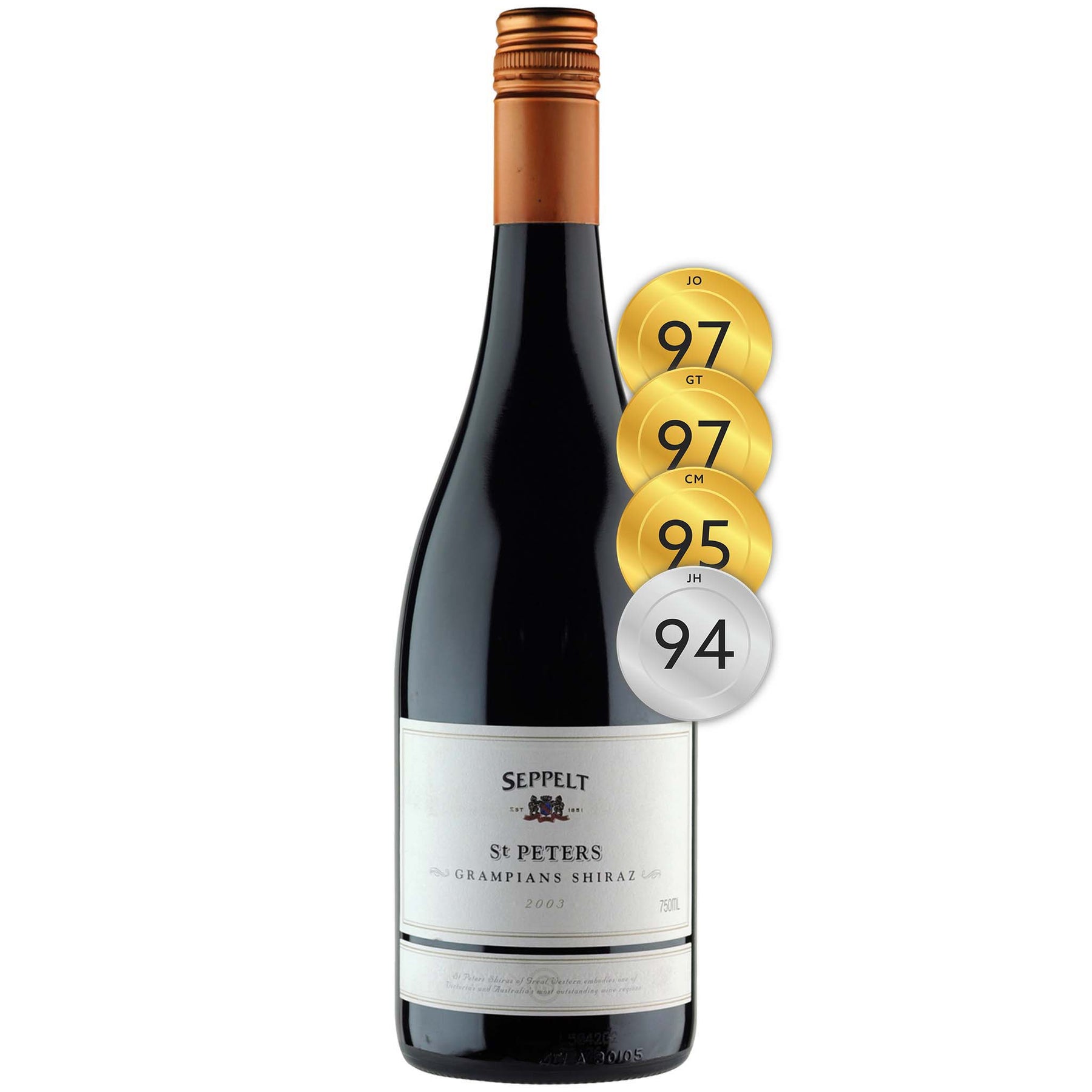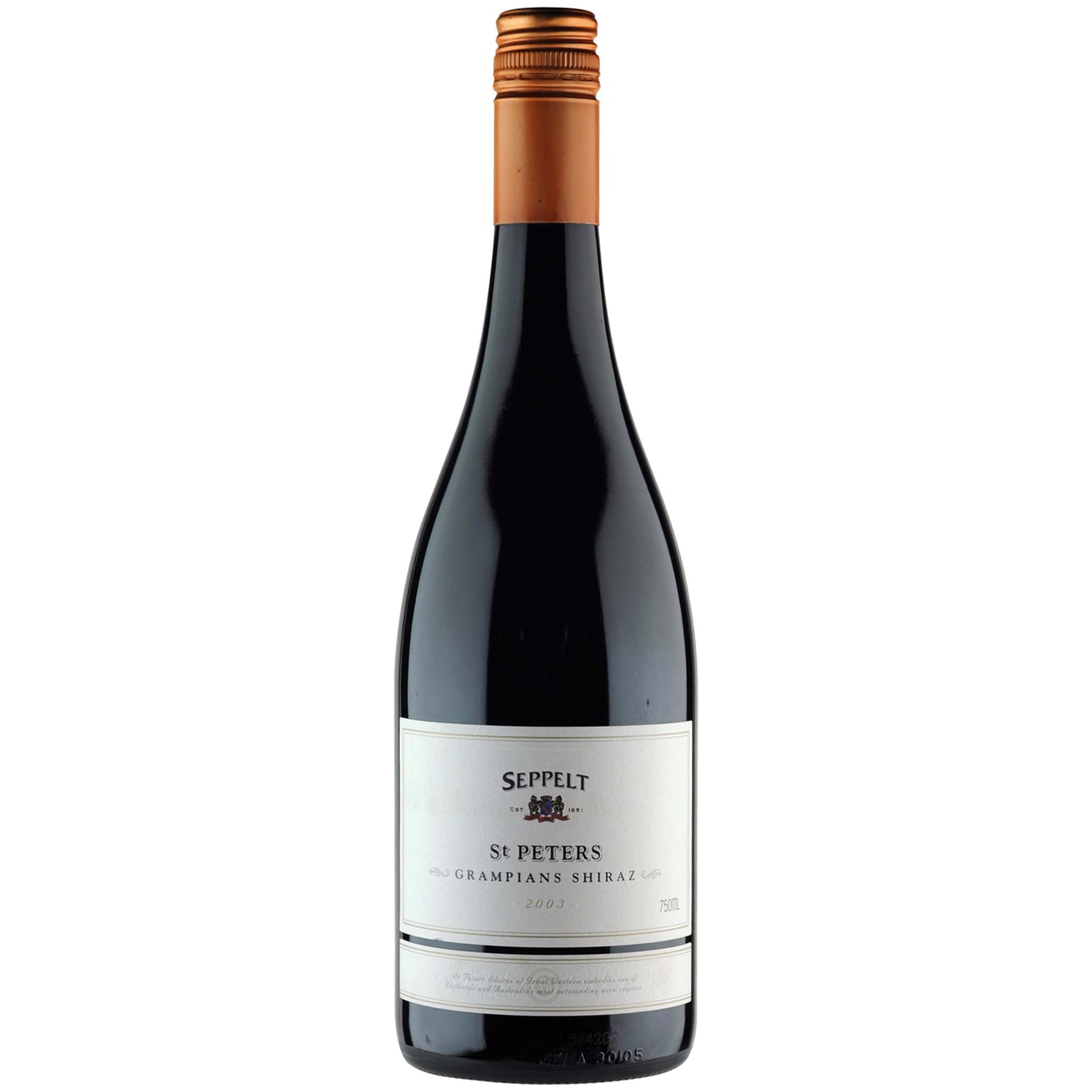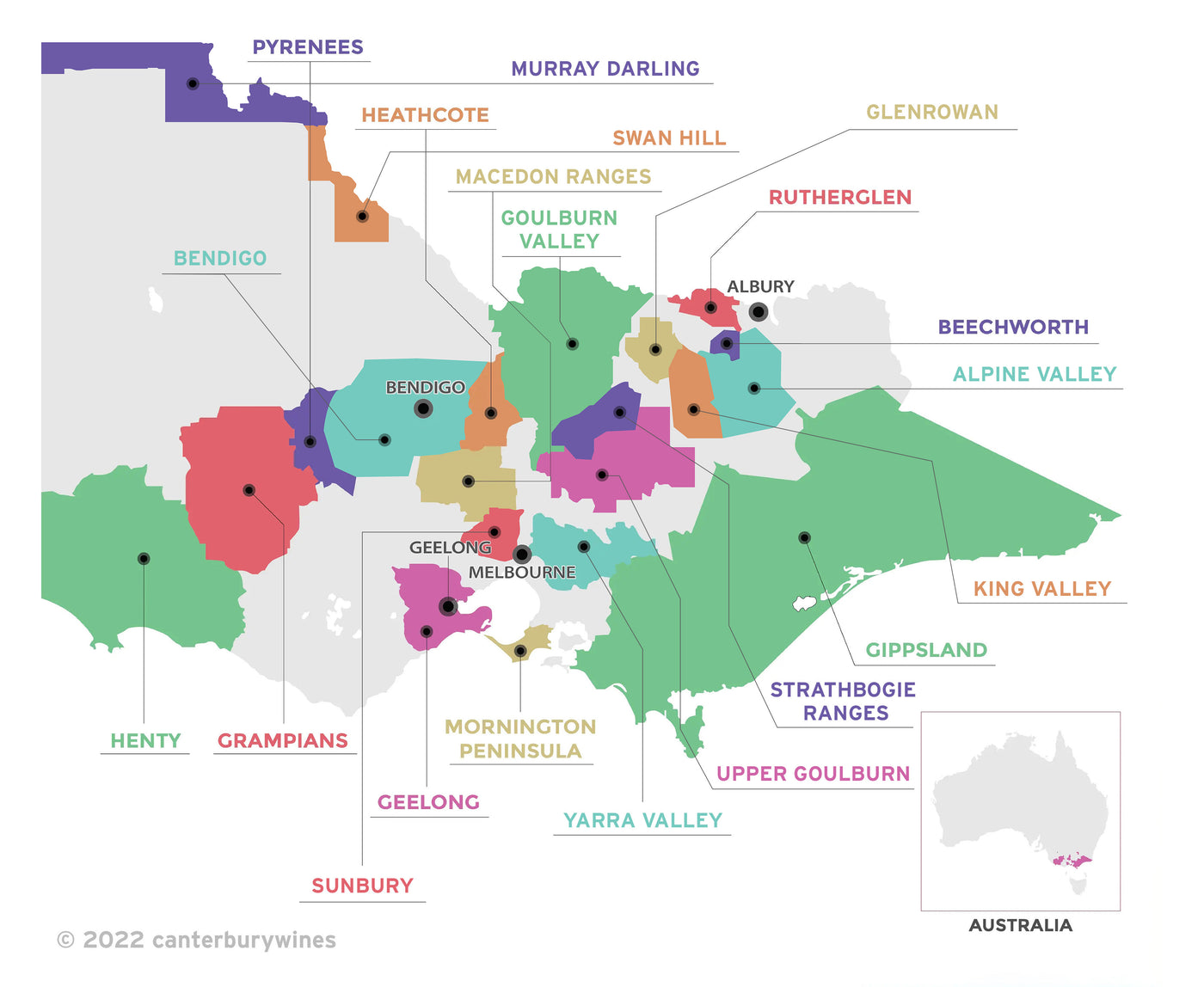

Seppelt St Peters Grampians Shiraz 2003
Style: Red Wine
Closure: Screwcap
Seppelt St Peters Grampians Shiraz 2003
Warehouse
34 Redland Drive
Vermont VIC 3133
Australia
Critic Score: 97
Alcohol: 13.5%
Size: 750 ml
Drink by: 2030
Released in small quantities and only in exceptional years, St Peters Shiraz is Seppelt's flagship wine, testimony to the distinctive style and pedigree of Grampians Shiraz. The first vintage of this iconic wine was released in 1964 as Seppelt Great Western Hermitage and the name changed to St Peters in 1998 in honour of the historic St Peters vineyard which was the first vineyard planted in the region in 1863. With extraordinary cellaring potential of 50 years or more, this wine is classified 'Outstanding' by Langton's in its classification of Australian Wine.
"A deep, succulent, concentrated shiraz with spicy, smoky, toasty and meaty aromas of complexity. Soft, fully ripe and ultra smooth, it's about power without excess alcohol." Gourmet Traveller Wine
Expert reviews
"A closed, dark and brooding shiraz whose bouquet is deeply layered with dark berries, cherries and chocolate, and backed by cinnamon-like spice and tightly integrated cedary oak. Smooth and savoury, its complex and tightly integrated palate steadily builds in weight and firmness down the palate. There's a meaty, wild and briary aspect about its dark plum and berry fruit, neatly entwined by tannins of velvet smoothness but a talcum-like persistence. It's genuinely firm and superbly structured, a wine that will gradually unfold and reveal its qualities over many, many years. Drink 2023-2033." Jeremy Oliver - 97 points
"A deep, succulent, concentrated shiraz with spicy, smoky, toasty and meaty aromas of complexity. Soft, fully ripe and ultra smooth, it's about power without excess alcohol. Cellar 20+ years." Gourmet Traveller Wine – 97 points ★★★★★
"The quality just keeps coming, in time I may even like this more than the 2002. Incredibly fruit bright. Lush texture and aromatics. Cedary oak, but balanced, with bursts of black pepper and spice crushing through the mulberried, earthen, layered fruit. Outstanding. Drink: 2005-2020." Campbell Mattinson, Winefront Monthly - 95 points
"Good colour; a powerful, ripe wine with savoury black fruits plus a twist of licorice and spice; ripe tannins. From 80-year-old plantings around the winery. Screwcap. 13.5º alc. Drink Now - 2018." James Halliday, Halliday Wine Companion - 94 points
About great western vineyard
The Great Western Vineyard forms the heart of Seppelt's Great Western operation and comprises 118 hectares of vines that surround the historic winery. The vineyard is planted mainly to shiraz and provides fruit for Seppelt's pinnacle wines, including the flagship St Peters Shiraz and the legendary Show Sparkling' Shiraz.
St Peter's is sourced from the finest and most intense fruit from the best blocks of the Great Western Vineyard - low yielding vines planted on weathered volcanic soils. The Imperial and St Peters Blocks were established in the 1930s, the Police and McKenzie Blocks in the late 1970s, the Arrawatta and Bass Blocks in the late 1990's.
The vines in the Great Western Vineyard were largely replanted in 1961 to what is known as the St Peters clone of shiraz, that is traced back to the Busby Collection of the 1830s. There are no ancient vines – it is the heritage clonal material and nuanced management techniques that set the Great Western Vineyard apart.
James McKenzie, viticulturist at Great Western since 2017, says: "Our shiraz is not as big as a Barossa shiraz, and unlike a Coonawarra or Heathcote. And it's not trying to be. It is distinctly Great Western – a medium-bodied style driven by dark berry fruit, notable spiciness and long, shaping graphite tannins different to anywhere else in Australia.” And while that regional character holds true whichever clone is employed, McKenzie stresses that their vine material has its own distinct character. It's something that he says makes him immensely proud to be working with. "It is quite likely that this clone does not exist to any great extent outside of Great Western, let alone anywhere else in the world. When I tasted our premium shiraz block in my first season at Great Western, I was blown away by the concentration and depth of fruit and the pepper and spice from our St Peter's clone, and I remember thinking: 'This is unreal – it's where I want to be growing shiraz, with the best clones in the most underestimated region in Australia."
Reference material taken from: https://younggunofwine.com/vineyard/seppelt-great-western-vineyard/
About the winery

Seppelt is one of Australia's most historic wine producers. Few Australian wineries have carved such a distinguished name for both still and sparkling wines. Not only is Seppelt a pioneer of white and red sparkling wine in Australia, but it also crafts some of the country's most collected table wines and has helped pave the way for cool climate styles in Australia.
Seppelt wines capture a diversity of Victorian terroirs. It sources fruit from vineyards situated in the cool Grampians, the Henty Hinterland, Heathcote and Bendigo. Each region offers parcels of unique character and distinctive regional typicity. The backbone of Seppelt's portfolio are the three iconic wines; St Peters Shiraz, Drumborg Riesling and the Show Sparkling Limited Release Shiraz, which is made only in exceptional years.
The Seppelt Great Western winery traces its history back to 1865 when it was founded by Joseph Best – his brother also notably planted nearby. The vine material was sourced from St Peters Vineyard, which was the region's first vineyard planted just two years earlier in 1863. Best commissioned gold miners to dig the underground tunnels or drives that the winery is famous for. Those drives were expanded by Hans Irvine who purchased the estate after Best's sudden death in 1887 at the age of 57.
Irvine also expanded plantings and employed the ex-winemaker from Pommery, Charles Pierlot. At that time, some sparkling wine was being made locally, but it was Irvine's commitment that established the strong tradition in the region. That included what is often credited as the first Sparkling Burgundy, as it used to be called, made from red grapes, while sparkling whites were made from ondenc (once a common Bordeaux grape but now mainly grown in Gaillac), which has naturally high acidity.
By the early 1900s, there were over 1.6 kilometres of drives for cellaring and Great Western was Australia's largest wine producer. The operation was sold to Benno Seppelt in 1918, who added the family name and expanded the business further.
Fast forward to today and the winery is part of the Treasury Wine Estates portfolio, but the traditions are still very much alive. Winemaker Clare Dry, who spent 13 years crafting wines in South Australia, took over from Adam Carnaby from the 2021 vintage.

Victoria
Victoria is home to more than 800 wineries across 21 wine regions. The regions are Alpine Valley, Beechworth, Bendigo, Geelong, Gippsland, Glenrowan, Goulburn Valley, Grampians, Heathcote, Henty, King Valley, Macedon Ranges, Mornington Peninsula, Murray Darling, Pyrenees, Rutherglen, Strathbogie Ranges, Sunbury, Swan Hill, Upper Goulburn and Yarra Valley.
Victoria's first vines were planted at Yering in the Yarra Valley in 1838. By 1868 over 3,000 acres had been planted in Victoria, establishing Victoria as the premier wine State of the day. Today, the original vineyards planted at Best's Wines are among the oldest and rarest pre-phylloxera plantings in the world.
Victoria's climate varies from hot and dry in the north to cool in the south and each wine region specialises in different varietals. For example, Rutherglen in the north is famous for its opulent Muscats and Topaque and bold reds, while the many cooler climate regions near Melbourne produce world class Chardonnay and pinot Noir. Victoria is truly a wine lover's playground.


